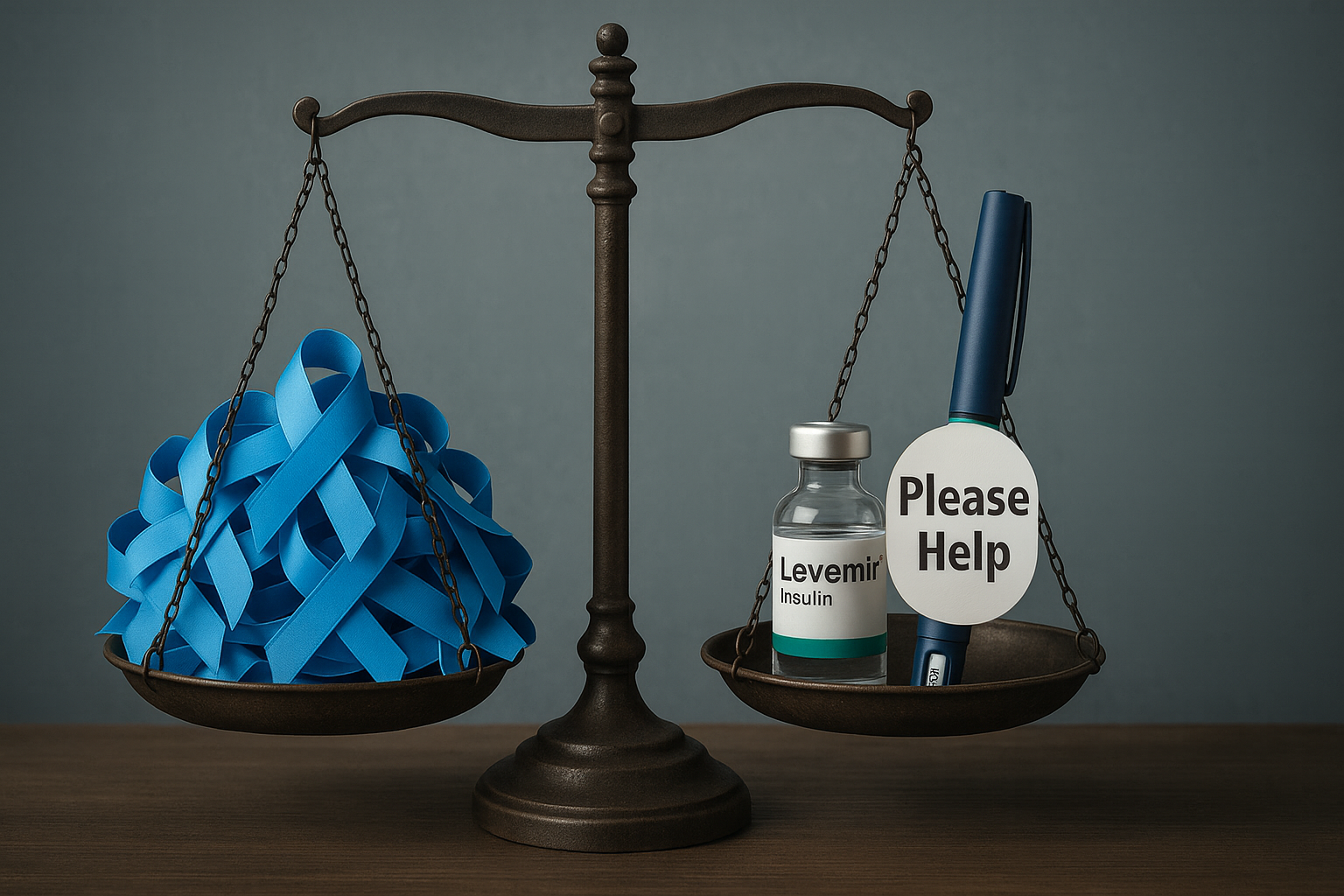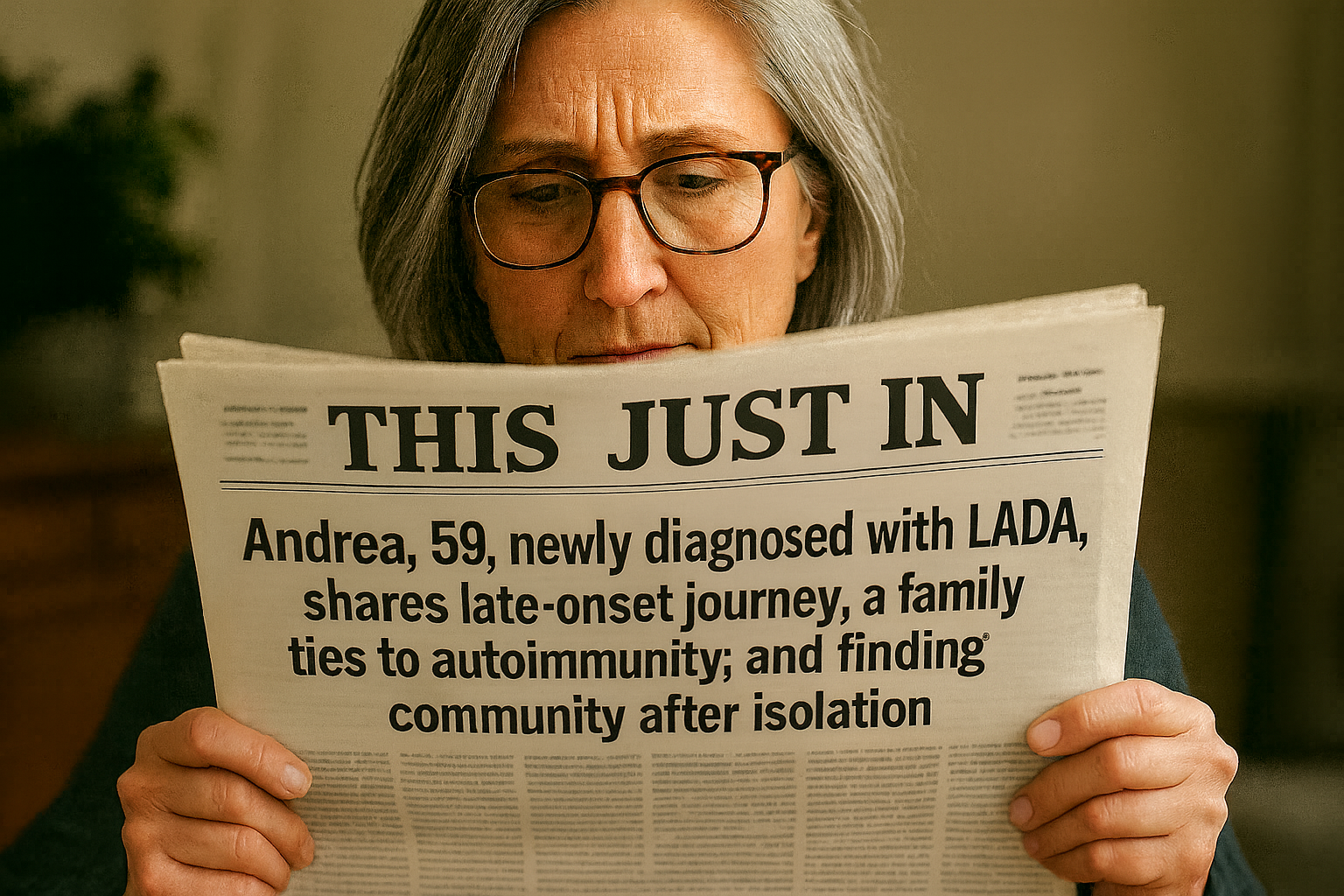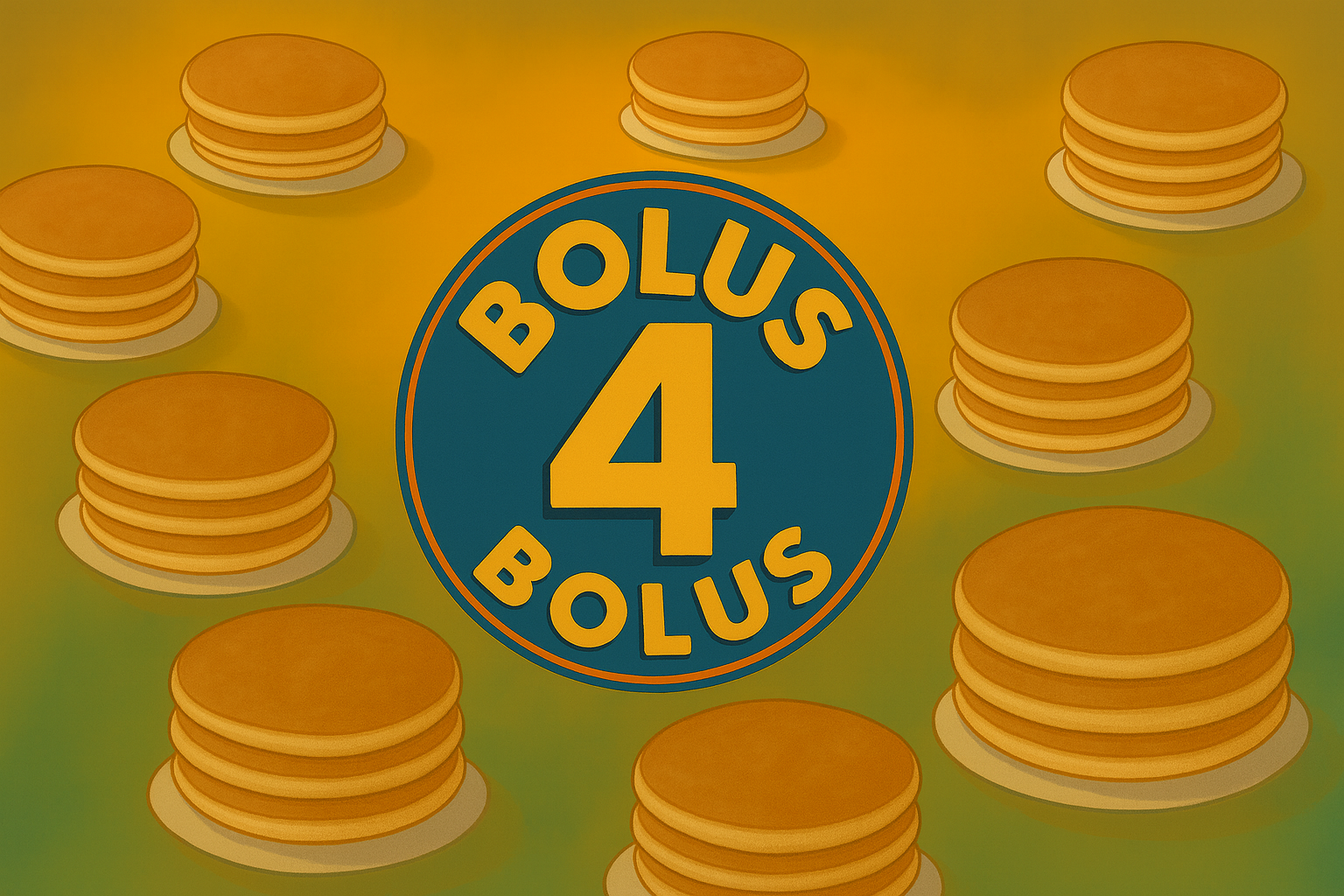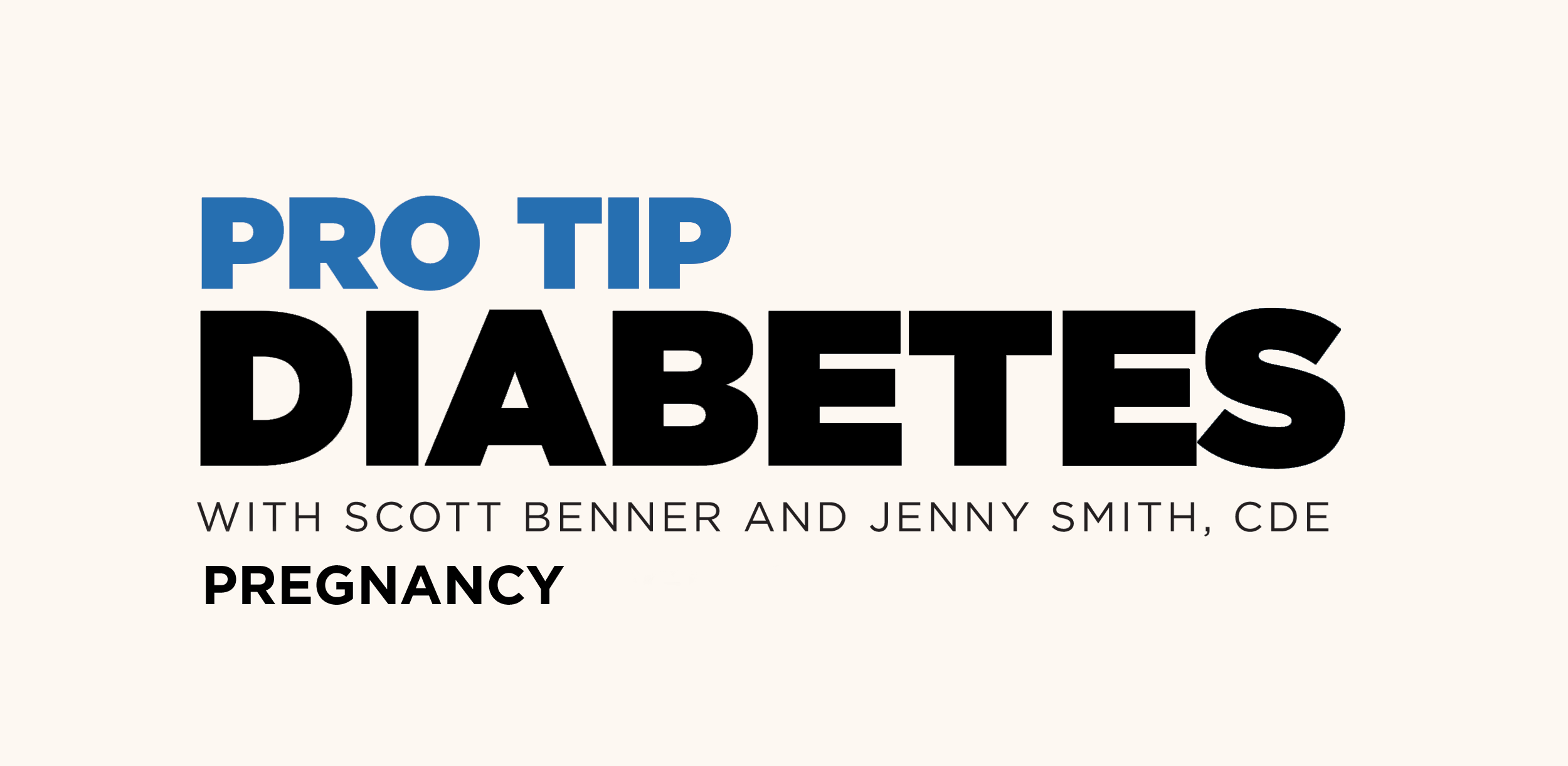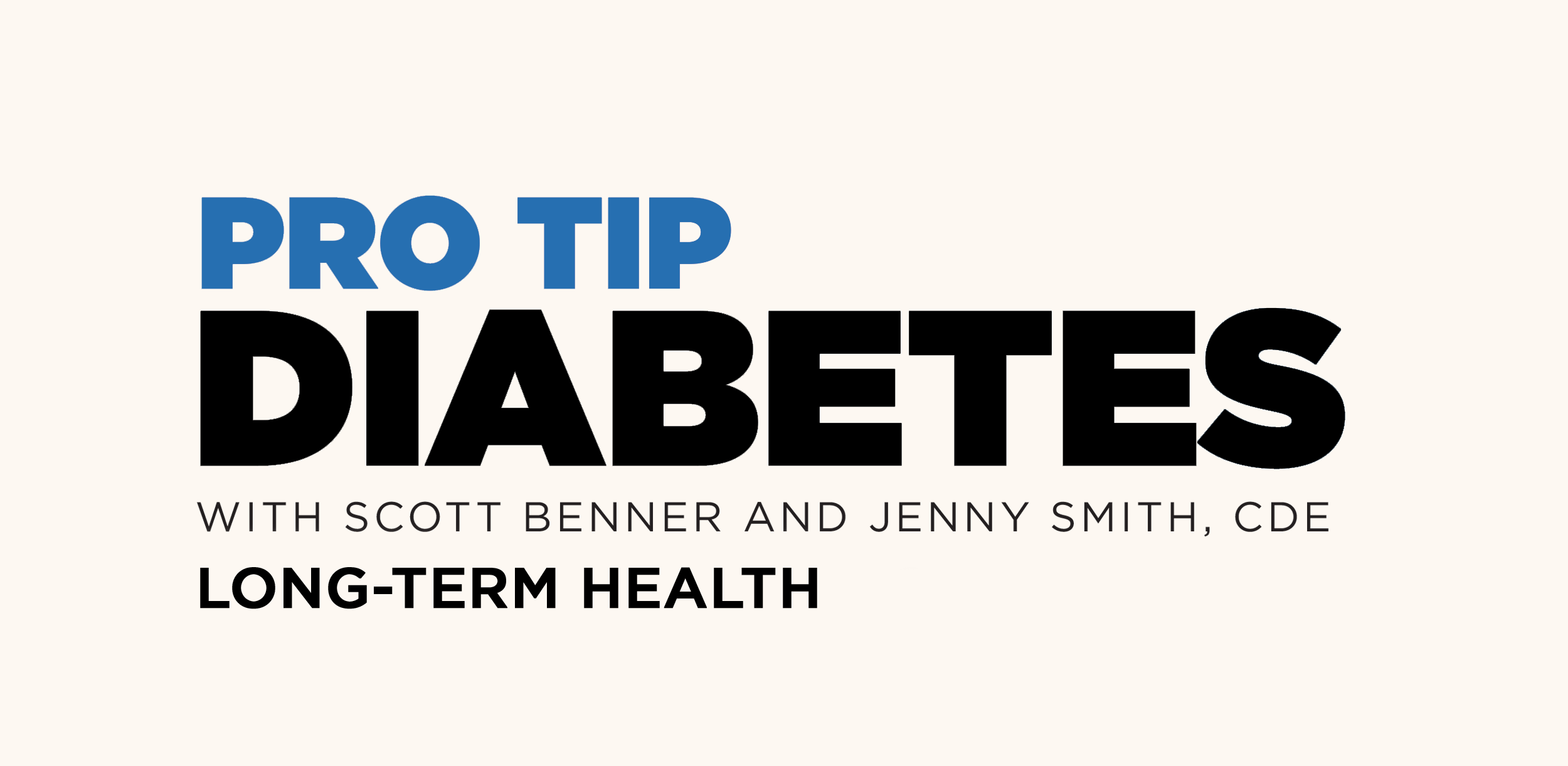An Average Day with Type 1 Diabetes
Most days are perfectly imperfect…
If you already listen to the Juicebox Podcast this quick post will serve as a reminder that:
There is a way to eat normally and achieve the A1c that you want.
A great A1c doesn’t necessarily mean that your BG is 85 (4.7) all day and night long.
Just because you haven’t figured something out doesn't mean that an answer doesn’t exist.
If you haven’t yet listened, I hope that this post represents what is possible when you:
Have easy to understand tools for using insulin.
Listen to the Juicebox Podcast at JuiceboxPodcast.com, Apple Podcasts, Spotify or on your favorite podcast app..
Try these episode to start #11 Bold With insulin, #29 Fear of insulin, #37, Jenny Smith, #44 Diabetes Rollercoaster, #62 Unfounded Fear, #100 Revisiting Bold, #105 All About A1c, #121 Insulin, Insulin, Insulin
You can always listen to the Juicebox Podcast or your favorite podcast app but if you don’t have one try one of these. Apple Podcasts/iOS - Spotify - Amazon Alexa - google play/android - iheart radio - .
Getting to Bold
In the beginning of our life with type 1 diabetes I would cry in the shower...
The shower seemed like a good place to vent my fear, frustration and utter lack of confidence. I would emerge reborn having dumped my anxiety down the drain. The guilt and pressure would of course build up again but the venting would usually hold me over for a week or so. During that time I believed that this was how my life would always be. Every time Arden's blood sugar was too high, too low or just plain all over the place, I would think...
"Well, that's just diabetes. There is nothing I can do, it's out of my hands."
Here's the secret though. That's not just diabetes. At least it doesn't have to be.
This blog and the people reading it saved me from that life but not perhaps in the way you might imagine. If you were to go back a decade and read my posts you would see a person struggling as I've described here. The blog was a raw nerve, a mirror to my worst moments, periodic triumphs and ardent fears. I would have an experience and then write about it. It was cathartic for me and the readers felt supported because they saw their lives in mine. This was my original concept of what a blog was for and what community meant. I would share my life transparently and you got the relief that came with knowing that you weren't alone. My daughter's A1c was 9, yours sucked too and we all felt the momentary relief of sameness.
My idea of community has grown
I would make incremental yet unsatisfying improvements to Arden's care. We got an Omnipod insulin pump and her A1c went down, we cut out some foods and it went down again. Still, no great shakes just lower. Eventually Arden got a Dexcom CGM but all that seemed to do was enforce the notion that I sucked at taking care of my daughter's disease. Then one day our nurse practitioner told me that the biggest hurdle in type 1 diabetes management was fear.
More specifically. The fear of insulin
Those words clicked in my head and I began to force myself to not be afraid. This was no small feat as you are reading the thoughts of a person who caused two seizures in their daughter. Twice in the beginning years with type 1 diabetes I gave Arden too much insulin and she had a seizure. Today I realize that it wasn't the insulin that caused the seizures, at least not completely. It was my ignorance about how the insulin worked. When I realized that... everything began to change.
Bold T-shirts
Arden's A1c went from 9 to 8.5 to 8 to 7.5 to 7 to 6 to 5.6
“A platitude is a statement that has been repeated so often that it is meaningless. ”
I figured it out. The next question was what is "it" and more importantly how do I share it with you without the platitudes that often strangle our community. Have you ever heard that, "marriage takes work" or been told to "enjoy this... it goes by so fast"? People love to say stuff but then not give you any details. Have you ever wondered why we don't speak with more detail? I think that some stuff doesn't require more so we don't offer more. We also often don't have the luxury of the time it takes to fully explain. Diabetes however deserves and requires the next level of the thought to be shared, for time to be taken. The tried and true methods should be given to anyone who is interested in knowing them. The problem is that it would be a lifetime of blog posts or a library full of books that you could never read. Still, what if you read the answer but couldn't apply the information or didn't quite understand and needed one more example. We say crap like, "well, that's just diabetes" because it's difficult to do more and those platitudes rob us of hope. One day I got tired of accepting that and wanted to do more. I threw out the old chestnut that tells us that everyones diabetes is different and that experiences can't be thoughtfully applied to others. I ignored that trope because it is not completely true and I knew that I could find a way to extract the basic tenants of diabetes and apply them to everyone. Once I did that the next step was to give the ideas the weight that they deserved and the thoughtful explanation that they required. Above all else, I wanted to provide real tools that were easy to use for the people who were ready to try and hope that one day they would be ready to those who weren't quite there yet.
A Phone call
Recent Juicebox Podcast reviews. Click to expand. Seriously, read them.
When you share online people sometimes contact you to ask questions. As you can tell by this post I can get wordy when I write. So one day when I received a question from one of you and I responded, "maybe just call me". The first time that I spent a half hour on the phone with a stranger explaining the tenants that I use in the day-to-day management of diabetes... it felt weird. That strange feeling was replaced a few days later when that person contacted me again to say that they understood. They made the changes that we spoke about and their child's blood sugars were suddenly and markedly better. I asked that person to keep in touch. I say that to everyone today. "Keep in touch... let me know how this worked out". I say it to everyone for two reasons. 1. I really do care and 2. your feedback helps me the next time that I speak to someone. When that first person reached back out six months later with a significantly reduced A1c I thought, "I wish I could talk to everybody at the same time.".
So I started the Juicebox Podcast
The episodes of the podcast are self-contained, organic conversations that will help you to get to a better place with diabetes. But that isn't the real benefit of the podcast. Those episodes when combined reflect my continued maturation as a person living with diabetes. They are powerful separately but together they are an organic conversation that grows and builds and teaches - both me and the people listening. I never would have believed that it would be so powerful but I see it today in your social media posts, reviews and personal letters.
Here's what I know. When I am Bold With Insulin my daughter's life is better. She is healthier, happier and less burdened by diabetes. I then take what I've experienced and we talk about it on the podcast. You will absorb information and begin to apply ideas in no time. I've tried to replace those hope draining platitudes with simple ideas supported by easy to understand details about how to make them work. I'm not a doctor but I do have a decade of crowd- sourced experiences and a knack for explaining them.
You can help to shape how people talk and live
There are three people reading this post. Those of you who are already being bold, those who want to be and those who aren't sure if you can. If you you're already there, please help to keep the platitudes out of the diabetes conversation. Be supportive without being reductive and encourage people to be bold. If you know the there is more to diabetes than what you've been told. If you can feel it in your gut but can't quite bring it into reality. Please listen to the podcast. If you think that I'm full of crap or just can't imagine things being better. Please, take a leap of faith. A better life is waiting on the other side.
Be Bold With Insulin - Listen to the Juicebox Podcast
On your iPhone or Apple Podcasts
On your Android phone or Google Play
You can also listen on your favorite podcast app by searching for Juicebox Podcast. The podcast is completely free for all listeners.
Diabetes teaches, if we’re ready to learn
Guest post from Terry O’Rourke
Companion to episode 349 of the Juicebox Podcast
Thank you for clicking on this companion piece that accompanies my interview on The Juicebox Podcast. I realized soon after the interview that I left the listener with an incomplete view of me and my diabetes management philosophy. I hope this fills in missing information and corrects anything that may have left the wrong impression.
I’d like to take this opportunity to further describe who I am, my diabetes history, how I eat, my thoughts on doctors, what I’ve learned from my diabetes, my thoughts on the “your diabetes may vary” adage, and finally, automated insulin dosing.
Let me start by saying that I don’t consider myself special and my perspective is certainly not the only way to think about and manage diabetes. It is simply one way — a way that works for me.
My diabetes background
Norm is Terry's hypoglycemia alert service dog, companion and friend
I am a 66 year-old man who has lived with type 1 diabetes for 36+ years. While I consider my blood glucose management today as excellent, it has not always been this way, far from it. I wish I could say that when it comes to diabetes, that I’m a quick learner and I’ve avoided learning things the hard way.
In fact, I spent decades making almost every diabetes mistake one can make. I am human and still make diabetes mistakes every day. One thing diabetes teaches is humility!
It wasn’t until year-28 of my diabetes journey that I finally resolved to take comprehensive action and set out to gather the information I needed to pivot to a more effective and satisfying management style.
I’m sorry to admit that my current management style came about primarily due to the onset of secondary complications. A gastroparesis diagnosis found me in 2012 and coronary artery disease followed in 2018. Diabetes has scarred me and I used those set-backs to fuel my motivation and hopefully lessen the effect those complications might take on the remainder of my life. Writing about this journey and sharing my experience with the diabetes community is one of the things that brings meaning to my life.
Disclosure of my current management numbers is done with some trepidation. I am not here to brag and I know that reporting nearer-to- normal blood glucose levels with T1D can irritate some and intimidate others — I don’t intend that. I also know that managing T1D is hard and complex — not everyone can reproduce what I do with their unique situation and I understand that.
I don’t see any way around this disclosure dilemma, however. I want you to know that my tactics lead me to good glucose management and I don’t want to just paint my outcomes in an ambiguous way. So here goes.
I much prefer % time in range, % time hypo, glucose variability and average glucose as the definitive measures of my glucose management. I use a continuous glucose monitor or CGM data for these measures. My A1c number interests me but I don’t use it to provide essential feedback since I realize that it is inherently an average number that can hide unacceptable variability as well as glucose values too far out of range.
My time in range (65-130 mg/dL) is usually > 90% with time low (<65 mg/ dL) < 5%. Standard deviation serves as my stand-in for glucose variability and is often =< 20 mg/dL. My average glucose hovers between 92 and 102 mg/dL. Meeting these personal standards rewards me with a better quality of life sustained by more energy and clearer thinking.
Own your diabetes
Now that you know the metrics that steer my diabetes management, I want to share one philosophical point that guides me. The “own your diabetes” philosophy drives my diabetes management. Your doctor does not live with your diabetes. Neither does your spouse, friend, child, parent, teacher, coworker or boss. Your diabetes is your diabetes! It is unique to you and directly impacts the quality of your life.
Having said that, I see parents of children with diabetes as an exception to this philosophy. I consider parents of children with diabetes, especially young children, as close to diabetes as a person can be without actually being diabetic. I suspect the close and empathic bond that parents and children enjoy is what makes this possible.
If you’re new to diabetes, you may go through a phase of bargaining as you adjust to this daunting reality. That’s fine for some short time and it does serve as way to cope with the shock that a diabetes diagnosis can leave in its wake. But don’t let that bargaining turn into a chronic affair. Bargaining delays and can prevent diabetes ownership. It took me 28 years to learn this hard lesson; it needn’t take so long.
Diabetes is as much a part of you as your profile, smile, and the way you move. It’s inherent and inseparable from your nature.
By owning diabetes, you will give it what it requires at the time it requires it. In return, it can reward you with metabolic peace and inject your life with energy, optimism, and possibility.
I realize that the above statement is an ideal view of things and tempering with pragmatic choices will be necessary. But I think targeting optimal goals motivates better than shooting for tepid uninspiring goals.
Let me recognize here that my situation as a retired single man makes it easier for me than people in other circumstances. I realize that other demands like family and work responsibilities can make doing this tough, but I’m expressing an ideal here, one that hopefully can provide a sentiment to power stretching toward better, realistically conceding that perfect is impossible.
I realize that even diligently acting on this philosophy of owning your diabetes will not turn your life into a continuous series of rainbows and unicorns, but it can set the stage for happiness that gluco-normals take for granted.
Listen to Terry on the Juicebox Podcast - June 2020
Your eating style matters
Food choices are a sensitive topic for everyone, including non-diabetics. Very few people take pleasure in seriously considering a change to their eating habits. Considering a change in diet ranks right up there with changing your religion or politics. It’s not a popular topic of discussion.
I choose to limit carbohydrates in my diet. Carbohydrates are the main driver in the need for insulin to metabolize glucose. Fewer carbs means less insulin is needed and therefore means smaller dosing errors — Bernsteins’s law of small numbers.
Limiting carbs in my diet has allowed me to lose significant weight and move me from the overweight to normal weight category. I cut my total daily dose of insulin to less than half and my blood sugar control markedly improved.
I do believe that too much insulin often leads to negative long-term health consequences. For my first 28 years with diabetes, my main glucose management tactic involved deliberate overdosing for meals followed by strategic snacking later to avert imminent hypos. This led to slow yet consistent weight gain and some scary hypos when life distracted me from my strategic follow-on snack.
There are more ways to eat successfully with diabetes than the path I’ve chosen. My way is not the only way but it’s a way that works for me. Others may choose to eat a high-carb and low-fat diet and still maintain good glucose management. Sugar-surfers, for example, can eat many more carbs than me and by paying attention and responding in a timely way with dynamic insulin dosing can keep their glucose in a good range.
If you consider limiting carbs to help with your glucose control, personally experiment to discover which foods and how many carbs work for you. You may be able to consume more carbs than me and still keep your blood sugars in check. “Eat to your meter” is a viable and potent tactic.
Processed carbs, I believe, are bad for everyone’s health. If it has a long ingredient list and you don’t recognize some of the items, you should consider avoiding that food. A once-in-a-while treat or convenience is one thing, eating that treat everyday may harm you.
A low-carb, high-fat diet as well as a high-carb, low fat diet can both be made to work with good glucose control but the Standard American Diet (SAD) of high-carb and high-fat is often the source of obesity, metabolic syndrome, and overall poor metabolic and immune health.
As I said in the podcast, no food tastes as good as a normal in-range blood glucose level feels.
Listen to Terry’s first appearance on the Juicebox Podcast - March 2016
Your doctor is on your side, but not completely
While eating choices play a crucial role in our diabetes health, our doctors also influence our diabetes perspective. Most of us visit our doctors regularly. I’ve been seeing doctors for diabetes about four times per year for 36 years. For the most part, I view my doctor as an ally in my daily struggle with diabetes but I’ve learned that their agenda and values are not completely congruent with mine. And that’s OK - just realize that you are the ultimate authority about your health choices since you are the only one who will directly live with the outcomes of those choices.
It’s best to recognize this so that you can manage that divergence of interest and keep conflict from undermining important facets of the patient/doctor relationship.
Please accept that I speak in a general way about doctors and your experience with your doctor may be better than the personal observations I make here. I’m well aware that great doctor/patient relationships exist. I wish I had a better history with my diabetes doctors and I maintain hope that I may yet grow into one.
Let me start by saying that doctors are on our side. They chose their profession to help others - they’re usually in their job for the right reasons. They can help us manage our blood sugars and navigate the complexity that is T1D.
Their ability to take on the mundane task of keeping all our prescriptions straight is monumental. Pharmacy benefit managers can make their lives as frustrating as ours on that point.
The biggest concern I have with my diabetes docs is that they can be overly fearful of insulin. This distracted fear of hypoglycemia will usually provide guidance that nudges you towards higher overall blood sugar averages in the hope that you manage to stay well away from any hypoglycemia.
Now I realize why doctors see hypoglycemia in this way; severe hypoglycemia kills some of us every year. It is a tragedy and a fact that we should all keep in mind as we make management decisions.
But modern technology and newer management styles can allow many of us to maintain lower glycemia without undue hypoglycemia. Notice that I didn’t say “zero hypoglycemia.” I think that any T1D who manages to remain near normal glucose for a high percentage of time with low glucose variability will experience some hypoglycemia. It goes with the territory.
Doctors can often fail to distinguish between patients with swinging blood sugars and a low average and others with much smaller variability and a closer to normal average. It’s something they should be able to see with today’s CGM charts but many docs reflexively act fearful at the first sight of a normal A1c (< 5.7%) or average blood glucose.
They’re worried about legal exposure and moral responsibility; I get that. The fact that this mindset is more than willing to trade hypoglycemia for hyperglycemia and ultimately greater risk of long-term complications is what bothers me.
It eases the practitioners’ legal and moral fears at the expense of our long- term health — not an acceptable trade for me. I know this doctor mindset is defensible with their average patient but I think doctors should be able to detect patients like me and still support my management choices appropriately.
Doctors are our allies but their position is not fully aligned with ours, a reality with which we should not lose sight.
Be a student of your diabetes
A good doctor can teach you about some important aspects of diabetes but a much larger body of knowledge is available to you, free to observe and learn. I discovered that observing my diabetes CGM data on a daily basis provided me with a potent method to improve my metabolic health. I never took a formal course in statistics but watching my CGM data has taught me important things about my glucose management.
I currently wear a Dexcom G4 continuous glucose monitor (CGM) but will soon transition to the Dexcom G6 shortly before the G4 goes dark on June 30, 2020.
I track four measures every day, listed in order of importance to me:
1. Percent time in range
2. Percent time in hypoglycemia
3. Glucose variability with standard deviation (SD) as the proxy
4. Average blood glucose
Note that the A1c number is not one of these metrics. I find the A1c interesting but not useful in daily management. We all know that an A1c can hide unhealthy glucose variability and excessive time in both hypo and hyper territory.
I set my time in range (TIR) bounds at 65-130 mg/dL to make me stretch and do not simply accept the much less challenging standard (70-180 mg/ dL) set by clinicians and the American Diabetes Association. But that standard may be perfect for you if it causes you to reach for better. If, however, you’re achieving 90-100% TIR with the ADA standard then perhaps tightening that range may be something to consider.
I find that the mere observance of my diabetes data on a daily basis engages my brain at a sub-conscious level and usually leads to better daily choices and performance.
I see a dark side to YDMV
Observation of your diabetes data often leads to the inevitable comparison against some standard or other’s data. This is often where Your diabetes may vary or YDMV comes into play. YDMV captures a generally accepted truth within the diabetes online community. It seems obvious on its face. Since my body differs from yours, it makes sense that my metabolism differs from yours.
When I first became aware of this commonly accepted “truth,” there was something about it that bothered me. While we do differ from each other along perfectly explainable distinctions, like male versus female, child versus mature adult, baby versus teenager, we still share the essential fact that we are all human beings. Our common humanity provides a shared biology that should not be minimized or dismissed altogether.
Certain facts of type 1 diabetes are true across all humans. Insulin metabolizes glucose. Too much insulin causes hypoglycemia. Not enough insulin can lead to diabetic keto-acidosis. Blood glucose in T1D is primarily a function of eating, exercising, insulin dose size and timing.
But, I observe a dark side of the YDMV aesthetic that I don’t think serves us well. A large part of treating diabetes well is determined by both knowledge and attitude.
If, for example, you observe that after every breakfast your glucose rises to 240 mg/dL (15 mmol/L) and instead of reasonable alarm that drives you to change something to improve your post-breakfast glucose, you instead take refuge in the YDMV axiom, then it permits you to dismiss the importance of your observation that your after-breakfast glucose is too high. YDMV may grant you permission to think that a high glucose after breakfast is simply your unique variation from the diabetic norm.
I don’t object to embracing YDMV to explain differences between us. But that explanation has limits and we must check ourselves to make sure we don’t use it to relieve us of responsibility and action to correct an unhealthy trend. My diabetes may vary from others but we should ask ourselves a critical question. Why does my diabetes vary in a certain aspect from others? Is it because of an unchangeable part of me or could it be due to something within my control? Am I doing everything I might to alter some part of my diabetes management and make it better?
For example, instead of concluding that your biology just doesn’t permit reasonable post-meal excursion and writing to off as YDMV, you could for example, experiment with pre-bolusing and discover much better control.
YDMV is true in that it can explain natural variability from one T1D to the next. We should, however, be honest with ourselves and examine whether any variation from the norm is really beyond our ability to manage or maybe we’re undermining good management because we don’t really want to do the work. An honest assessment might let us see a favored habit that is not really serving us well.
Automated insulin dosing is awesome
Overall philosophies like YDMV and becoming a student of your diabetes can help in the larger context of managing diabetes but technical treatment breakthroughs like automated insulin dosing can directly enable a better quality of life. On November 14, 2016, I went live with Loop and couldn’t believe my good fortune! My blood sugar management was already pretty decent at the time but Loop accomplished several things for me. For one, it immediately lightened the cognitive burden that good management of T1D entails.
Overnight, while sleeping, it kept my blood glucose or BGs in a tighter and more normal range. Prior to that, the only tools I had to influence a nice in- range BG while sleeping was a well-calibrated overnight basal profile and the discipline to avoid evening snacking.
Loop shines in the overnight hours. It can analyze and make a dispassionate math-based decision every five minutes, something that I couldn’t do even if I was awake. It’s common for me to wake up from a night with zero CGM alarms and in-range at 70-99 mg/dL. This is a huge quality-of-life boost.
While Loop is still a hybrid closed loop system and requires manual interventions around meals, it supports these decisions with a sophisticated algorithm. Loop also relieves the burden I felt with managing meals and exercise. It didn’t make things perfect but it significantly lightened my load. Loop allows me to boost my time in range, cut time hypo, while it reduces glucose variability and average BG. It enables better numbers with less conscious effort from me, a win-win solution.
I learned that a good fundamental understanding and fluency of basal rates and insulin sensitivity settings enabled me to make adjustments when things changed, as they always do. I still had to pay attention but the minute-to-minute burden was now gone.
Loop is not the only automated do-it-yourself (DIY) insulin dosing system. Other DIY systems include Open APS and Android APS.
We are also witnessing the emergence of commercial hybrid closed loop systems. The Medtronic 670G was introduced in 2016 but its abilities are more limited than the existing DIY systems, yet many people are happy with its performance. Tandem, with its X2 pump has brought forth its Basal-IQ and Control-IQ software upgrades, both highly effective and popular.
In the years ahead we can look forward to other refinements in automated insulin dosing. The BetaBionics iLet system will eventually make possible delivery of both insulin and glucagon, giving hormonal control to prevent both hypos and hypers.
I strongly encourage people with diabetes to consider experimenting with these systems. The ability to share the cognitive load with a machine can bring relief from this ceaseless burden.
I hope that sharing some about me and my diabetes history, how I eat, manage the doctor relationship, learn from my diabetes, a pitfall of YDMV, and automated insulin dosing systems may be useful to a few here. If you’ve made it to the end, I am humbled. I’ve learned much from my peers in the diabetes online community and I find it meaningful to pay forward what I’ve learned.
Dexcom Pro
Learn more about Dexcom
I was interviewing Dexcom CCO Rick Doubleday in February when he mentioned the forthcoming Dexcom Pro. The Dexcom G6 Pro is a single use, professional CGM available in blinded and unblinded mode that allows healthcare providers to view data about patients’ glucose patterns over a 10-day period, while allowing patients to view real-time glucose data and receive real-time hyper- and hypoglycemic alerts (when used in unblinded mode). The video below explains more. When Rick and I finished recording I asked if it would be possible for me to wear the Pro. I wondered if being able to watch a working pancreas would help me to learn more about the body’s expectations for health. I wanted to learn how much of a spike was normal, about times away from food that blood glucose rises and falls, what a fasting BG looks like and so much more.
I’ve only been wearing the Dexcom Pro for a few days so far and I’ve already learned so much about how a pancreas ‘thinks’. I can already tell that this experience will lead to a greater understanding of what people with diabetes should be aiming for and I know that I’ll be better prepared to be a T1 caregiver when I’m done. Additionally, this experience will undoubtable take the Juicebox Podcast into a new stratosphere. It’s all just very exciting and I believe that much of what I am seeing will impact how I think about using man-made insulin.
After I’ve finished with the Pro and process everything that I’m seeing, I’ll share what I’ve learned here on the blog and on the podcast.
At launch the G6 Pro starter kit will cost $249 and includes one reader and four sensors.
Once a clinician has bought the starter kit and has a reader for their practice, additional sensors are $59 each.
Offices are reimbursed for each sensor placement and again for each sensor interpretation, ultimately eliminating the cost to clinics. There is no cost to patients.
Only healthcare providers are able to order the G6 Pro.
More soon!
Please know that while Dexcom is a sponsor of the Juicebox Podcast, I am not being compensated for wearing the Dexcom Pro and have not been asked to write or talk about my experience. This was a brief moment at the end of an interview where I asked, “Can I please wear one… I think it will help me to understand insulin management better”.
Teen Talk LIVE! - Thursday May 7 @ 3pm EST
I'll be giving my Teen Talk (same talk that I delivered at the recent Type One Nation events at JDRF Greater Dallas, JDRF-Georgia Chapter, JDRF Kansas City Chapter, JDRF Oklahoma) online this Thursday at 3pm EST (link to join below). The talk is free and everyone who wants to attend is invited. No age restrictions, parents you know your kids.
We'll be discussing how I pre-bolus, use basal insulin, the virtues of acting before diabetes and MUCH more. Tell a friend!
Juicebox Podcast 〜 Teen Talk
May 7, 2020 03:00 PM Eastern Time
Join Zoom Meeting
https://us02web.zoom.us/j/6902743291
Meeting ID: 690 274 3291
If you don't want your image recorded, please turn off your camera. Meeting will be recorded and shared later. disclaimer: The information on this site is provided as an information resource only, and is not to be used or relied on for any diagnostic or treatment purposes. This information is not intended to be patient education and should not be used as a substitute for professional diagnosis and treatment.





